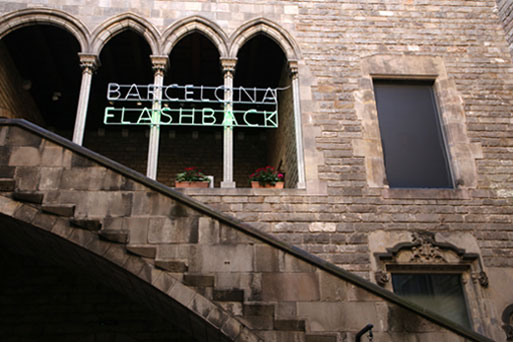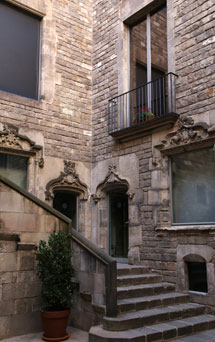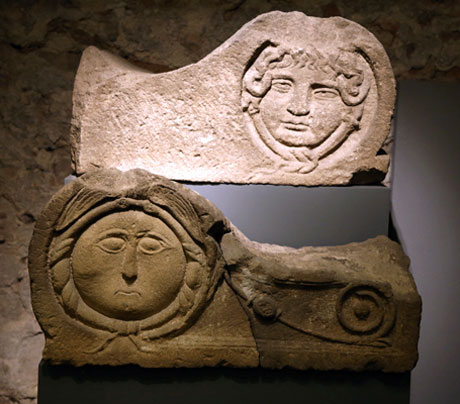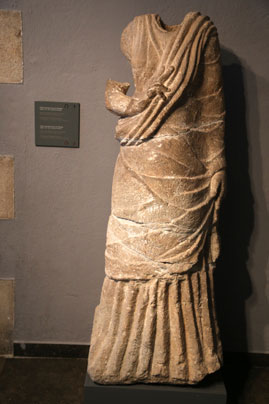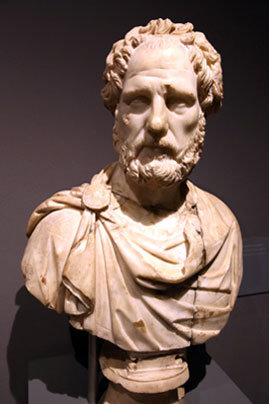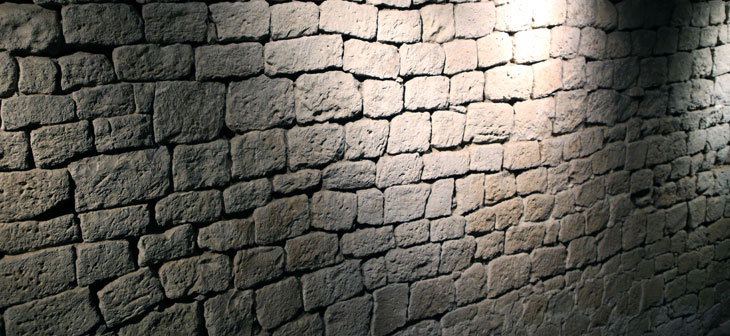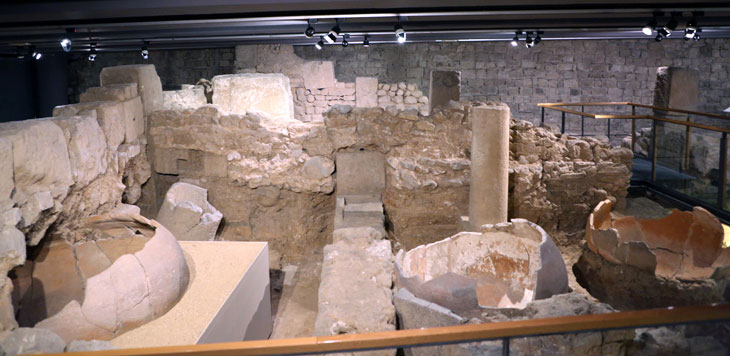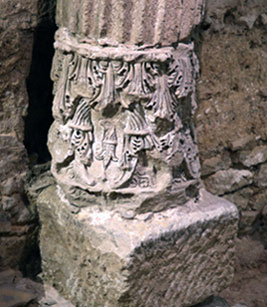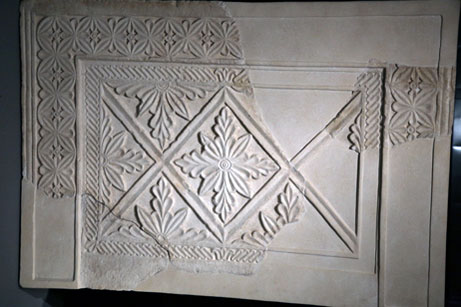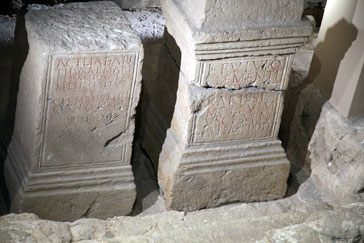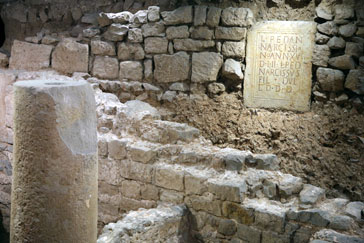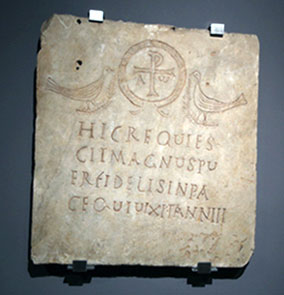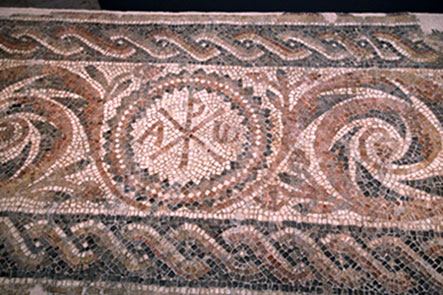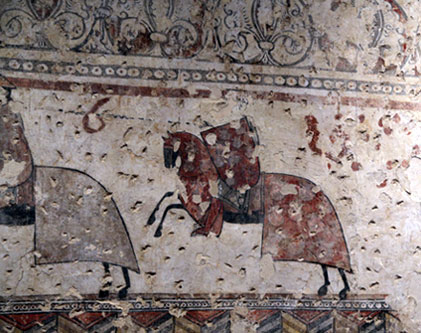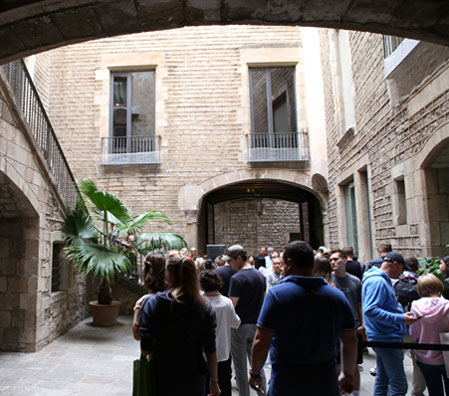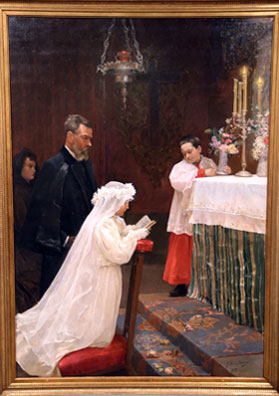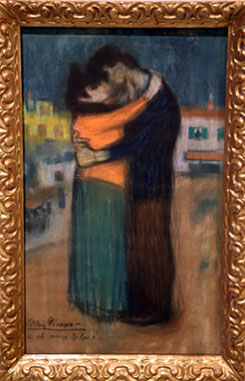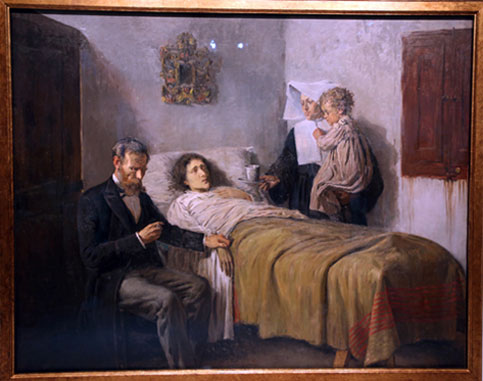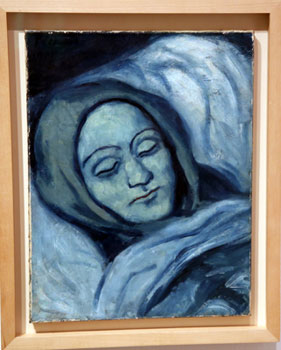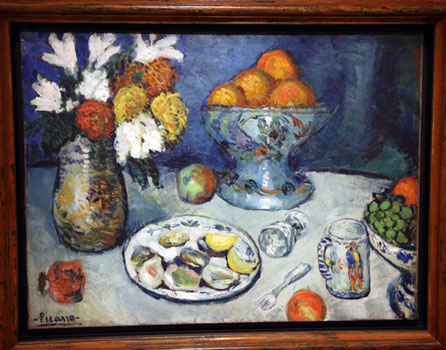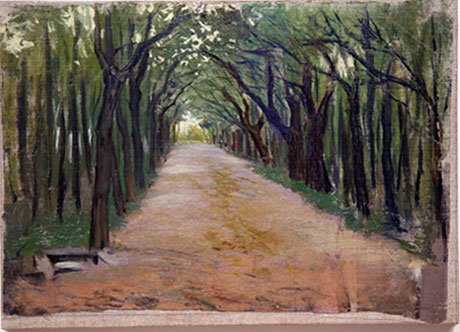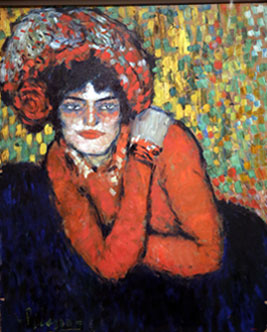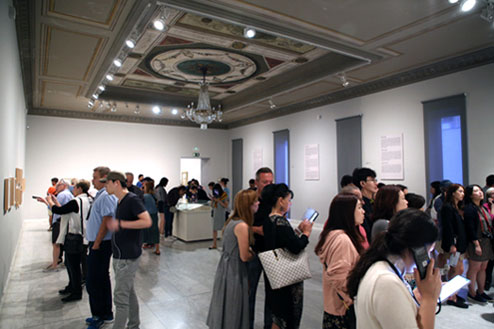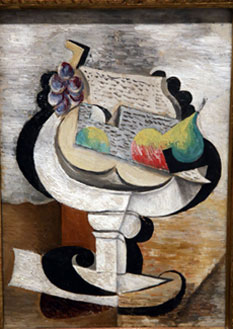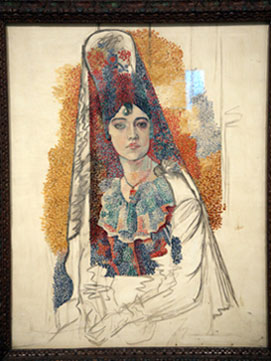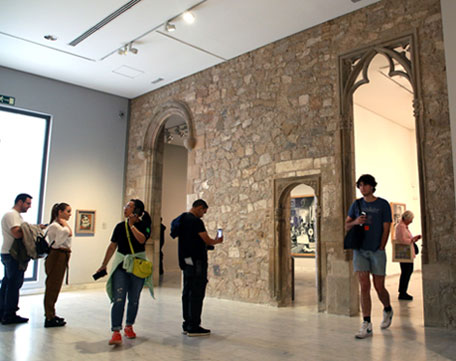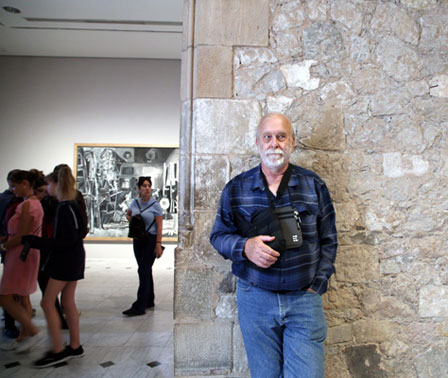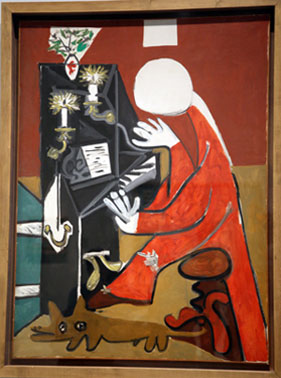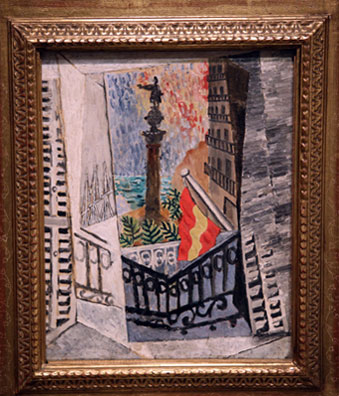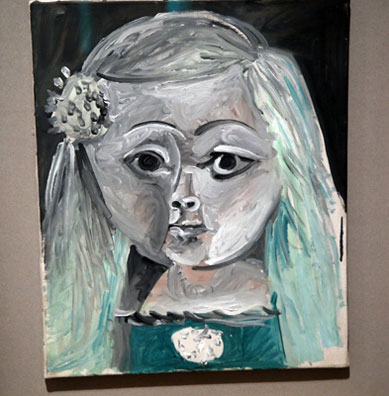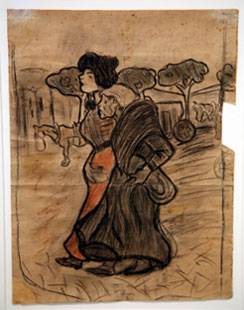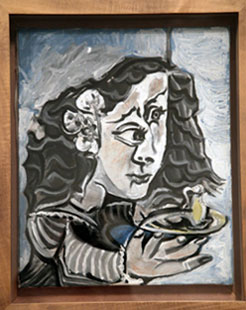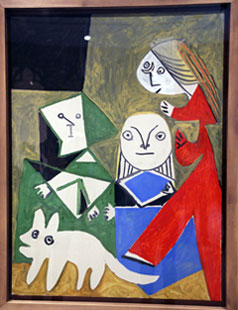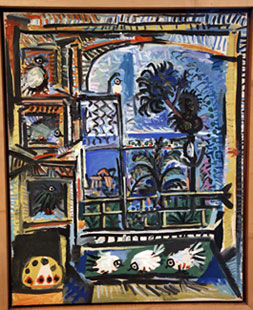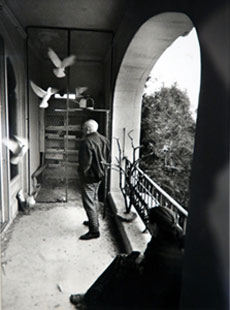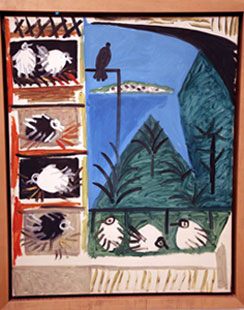Museum of the History of Barcelona and the Picasso Museum
One of the places we wanted to visit was the Museum of the History of Barcelona. The museum is spread out
over 15 sites across the city, but the main location is in a 15th century building called the Gothic Palace.
In the early 1900's when the neighborhood was being transformed for the Barcelona International Exposition,
the palace was relocated stone by stone to its current location. A large portion of the ancient Roman city of
Barcino was discovered during the restoration, and visitors to the museum can descend to the excavated site.
This is the entrance to the museum.
These sandstone statues were part of funerary monuments.
I was amused by this marble bust of a man dating back to the second century AD. Is it just me, or does he resemble
Bill Nighy?
This is a section of the old Roman city wall.
Elevated walkways allow you to walk through the ruins. The large ceramic vessels once held salted fish.
There are also older ruins of a church that was built at the end of the 6th Century on top of the ruins of the
old Roman shops and factories.
Upstairs we wandered through a large hall full of medieval exhibits and artifacts.
Another museum we wanted to see was the Picasso Museum. Housed in five adjoining medieval palaces, it
contains 4,251 works by the artist.
The painting of a Communion below was Picasso's first major work.
The painting in the sick room is another early work that received much acclaim.
Surprisingly, the picture on the right was the only still life on display.
The museum was crowded, but not overwhelmingly so.
Apparently, in his later years, Picasso went through a stage where he just sat on his balcony and
painted pigeons.
It was interesting to see the many styles the painter embraced during his long career.
